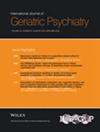Suicide Among Older People in Spain: The Role of Sex and Urbanicity
Abstract
Objectives
Suicide rates are driven by availability of lethal means, increase with age, and are often higher in rural versus urban areas. This study examines temporal and geographic variations in suicides among elderly with a focus on rural-urban differences in method-specific suicide rates among people aged 65 and older in Spain, a rapidly aging country.
Methods
Population-based study including all suicides among people over 65 in Spain between 2010 and 2022. We examined overall and method-specific suicide rates and their temporal and geographical variation, stratifying results by sex and urbanicity level. Time trends were estimated via joinpoint regression. Maps were created to analyze the geographical distribution of suicide rates.
Results
While 2010–2022 suicide rates in people aged 65 and older remained largely stable overall, they increased by an annual 2.6% for women living in urban areas. The most common suicide methods were hanging for men living in rural and urban areas (68.5% and 47.3%, respectively) and for women living in rural areas (42.1%); for women living in urban areas jumping was the modal suicide method (46.9%). Method-specific trend analyses revealed recent increases in male suicide by poisoning and hanging in rural areas, decreases in male suicide by hanging and increases in male suicide by jumping in urban areas, and increases in female suicide by poisoning and jumping in urban areas. We identified and mapped remarkable geographic variation in overall and sex-specific suicide rates across Spain's regions.
Conclusions
These results, highlighting recent increases in female suicides in urban areas and in specific method-specific male suicides both in rural and urban areas, and demonstrating geographical variation across regions, should help guide targeted suicide prevention efforts.

 求助内容:
求助内容: 应助结果提醒方式:
应助结果提醒方式:


